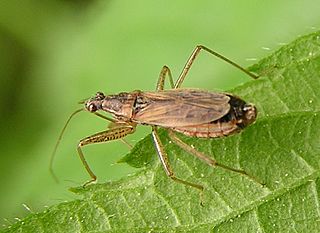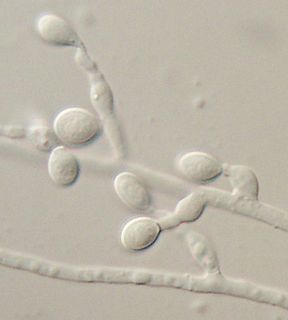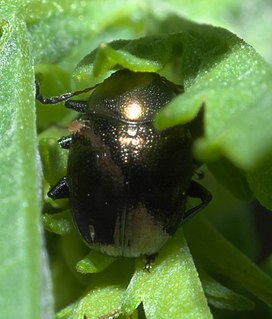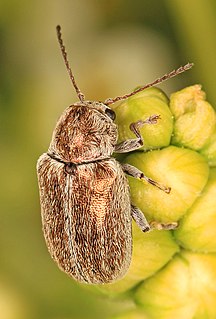
The Integrated Taxonomic Information System (ITIS) is an American partnership of federal agencies designed to provide consistent and reliable information on the taxonomy of biological species. ITIS was originally formed in 1996 as an interagency group within the US federal government, involving several US federal agencies, and has now become an international body, with Canadian and Mexican government agencies participating. The database draws from a large community of taxonomic experts. Primary content staff are housed at the Smithsonian National Museum of Natural History and IT services are provided by a US Geological Survey facility in Denver. The primary focus of ITIS is North American species, but many biological groups exist worldwide and ITIS collaborates with other agencies to increase its global coverage.

The insect family Nabidae contains the damsel bugs. There are over 500 species in 20 genera. They are soft-bodied, elongate, winged terrestrial predators. Many damsel bugs catch and hold prey with their forelegs, similar to mantids. They are considered helpful species in agriculture because of their predation on many types of crop pests.
Tolypocladium inflatum is an ascomycete fungus originally isolated from a Norwegian soil sample that, under certain conditions, produces the immunosuppressant drug ciclosporin. In its sexual stage (teleomorph) it is a parasite on scarab beetles. It forms a small, compound ascocarp that arises from the cadaver of its host beetle. In its asexual stage (anamorph) it is a white mold that grows on soil. It is much more commonly found in its asexual stage and this is the stage that was originally given the name Tolypocladium inflatum.

Olsynium douglasii is a species of flowering plant in the iris family (Iridaceae). Common names include Douglas' olsynium, Douglas' grasswidow, grass-widow, blue-eyed grass, purple-eyed-grass, and satin flower, It is native to western North America, from southern British Columbia south to northern California, and east to northwest Utah. It is the only species in the genus Olsynium in North America, the remaining 11 species being from South America. It was formerly treated in the related genus Sisyrinchium.

Anthribidae is a family of beetles also known as fungus weevils. The antennae are not elbowed, may occasionally be longer than the body and thread-like, and can be the longest of any members of Curculionoidea. As in the Nemonychidae, the labrum appears as a separate segment to the clypeus, and the maxillary palps are long and projecting.

The Cryptorhynchinae is a large subfamily of weevils (Curculionidae), with some 6000 species. They are found in most zoogeographic regions although they are most diverse in the Neotropics, Australia and Oceania.

Lomentospora prolificans is an emerging opportunistic fungal pathogen that causes a wide variety of infections in immunocompetent and immunosuppressed people and animals. It is resistant to most antifungal drugs and infections are often fatal. Drugs targeting the Class II dihydroorotate dehydrogenase (DHODH) proteins of L. prolificans, Scedosporium, Aspergillus and other rare moulds are the basis for at least one new therapy, Olorofim, which is currently in phase 2b clinical trials and has received breakthrough status by FDA. For information on all DHODH proteins, please see Dihydroorotate dehydrogenase.
The Name and Title Authority File of Catalonia (CANTIC) is an authority union catalogue within the Union Catalogue of Universities of Catalonia (CCUC), that it is led by the Biblioteca de Catalunya. Its goals are to standardize the access points in bibliographic catalogues, to improve communication among catalogues and mainly, to make easier the information research and retrieval. CANTIC gives a special treatment to name and title authorities related with Catalan culture. These authorities receive a complete authority work and provide, eventually, access to the Enciclopèdia Catalana.

Schizopteridae is the largest family in the infraorder Dipsocoromorpha and comprises 56 genera and approximately 255 species. Schizopterids are some of the smallest (0.5–2.0 mm) true bugs. Members of this family can be distinguished by their small size, enlarged forecoxae and varying degree of abdominal and genitalic asymmetry in males. Schizopteridae exhibit a wide range of simple and complex wing venation patterns–some species even possess true elytra. The group is currently divided into three subfamilies: Schizopterinae, Ogeriinae and Hypselosomatinae.

Eumolpini is a tribe of leaf beetles in the subfamily Eumolpinae. It is the largest tribe in the subfamily, with approximately 170 genera found worldwide. Members of the tribe almost always have a longitudinal median groove on the pygidium, which possibly helps to keep the elytra locked at rest. They also generally have a subglabrous body, as well as appendiculate pretarsal claws.
Paria opacicollis, the oak parium, is a species of leaf beetle. It is found in North America.
Promecosoma is a genus of leaf beetles in the subfamily Eumolpinae. There are 26 described species in Promecosoma. Most species are found in Mexico, though two species are also known from southern Arizona.

Glyptoscelis is a genus of leaf beetles in the subfamily Eumolpinae. There are 38 described species in Glyptoscelis, known from North, Central and South America.
Zenocolaspis is a genus of leaf beetles in the subfamily Eumolpinae. It is known from North America and South America. There are at least two described species in Zenocolaspis. The genus is very similar to Colaspis, but the body is smaller and the eyes are strongly convex and prominent externally.
Metaparia is a genus of leaf beetles in the subfamily Eumolpinae. There are 12 described species in Metaparia, from North America and Central America.
Colaspis costipennis is a species of leaf beetle from North America. It is mostly found in coastal states; in the United States, its range extends from Louisiana and Georgia north to New Hampshire and Pennsylvania, and in Canada, it is reported from Ontario. It was originally described as a variety of Colaspis brunnea, but it is now recognised as a distinct species.

Cionomimus insolens is a species of true weevil in the beetle family Curculionidae. It is found in North America.
Fidia humeralis is a species of leaf beetle. It ranges from southeastern Arizona and southwestern New Mexico, along the Sierra Madre Occidental and Sierra Madre del Sur, south to Oaxaca in southwestern Mexico. It was first described as two species, Fidia humeralis and Fidia plagiata, by the French entomologist Édouard Lefèvre in 1877. These two species were later found to be synonymous.
Promecosoma arizonae is a species of leaf beetle. It is found in southern Arizona and in New Mexico in the United States, as well as in Mexico.

David Olivier is a French and British philosopher and antispeciesist activist. He is founder of the French journal Cahiers antispécistes, the annual event Veggie Pride and of the annual meeting Les Estivales de la question animale . Olivier is also the creator of the term "veggiephobia" and of numerous articles and conferences. He is an advocate of utilitarian and antinatauralist ethics, and defines himself politically as a progressive.










